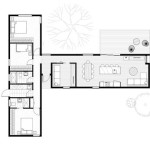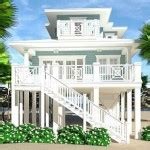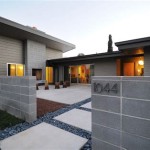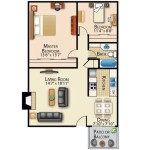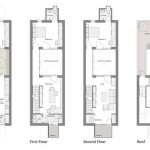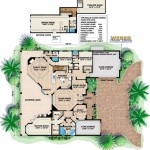Blueprint house plans, also known as architectural drawings, are detailed technical diagrams that guide the construction, alteration, and renovation of residential structures. They provide a comprehensive visual representation of the building’s design, layout, and specifications.
These plans serve as a roadmap for architects, builders, engineers, and contractors, ensuring that the project is executed according to the intended design and meets all applicable building codes and regulations. For instance, blueprint house plans depict the location of walls, doors, windows, plumbing fixtures, electrical outlets, and other essential elements of the house.
Moving forward, we will explore the significance of blueprint house plans, their components, and the benefits they offer to homeowners, builders, and architects alike.
Blueprint house plans serve as essential tools for a successful building project. Here are 10 important points to consider:
- Detailed visual representation
- Guides construction and renovation
- Ensures compliance with building codes
- Facilitates communication among builders
- Reduces construction errors and delays
- Provides accurate cost estimates
- Protects homeowners’ interests
- Serves as a legal document
- Enhances property value
- Supports sustainable building practices
By understanding the significance of blueprint house plans, homeowners, builders, and architects can leverage their benefits to ensure the successful completion of their projects.
Detailed visual representation
Blueprint house plans offer a detailed visual representation of the building’s design, serving as a comprehensive guide for construction and renovation projects. These plans depict the building’s layout, dimensions, and specifications with precision, allowing architects, builders, and homeowners to visualize the final structure before construction begins.
Blueprint house plans typically include floor plans, elevations, sections, and details. Floor plans provide a bird’s-eye view of each level of the building, showing the arrangement of rooms, hallways, and staircases. Elevations illustrate the exterior appearance of the building from different sides, while sections offer a cross-sectional view of the building, showcasing the relationship between different spaces and the building’s structural elements.
Furthermore, blueprint house plans include detailed drawings of specific elements, such as kitchens, bathrooms, and mechanical systems. These drawings provide precise measurements, material specifications, and installation instructions, ensuring that each component is constructed and installed according to the design intent.
By providing a detailed visual representation of the building’s design, blueprint house plans serve as a valuable tool for communication and collaboration among architects, builders, and homeowners. They help to identify potential issues early on, minimize errors during construction, and ensure that the final structure meets the expectations of all stakeholders.
Guides construction and renovation
Blueprint house plans serve as indispensable guides throughout the construction and renovation process, ensuring that the project is executed according to the intended design and meets all applicable building codes and regulations.
During construction, blueprint house plans provide a clear roadmap for builders and contractors. They specify the exact placement of walls, windows, doors, and other structural elements, ensuring that the building is constructed as per the design intent. The plans also include detailed specifications for materials, finishes, and fixtures, ensuring that the building meets the desired aesthetic and functional requirements.
Blueprint house plans are equally valuable during renovation projects. They help homeowners and contractors visualize the proposed changes and identify any potential challenges or conflicts with the existing structure. The plans guide the renovation process, ensuring that the changes are executed seamlessly and in accordance with the overall design concept.
Furthermore, blueprint house plans are essential for obtaining building permits and approvals from local authorities. They demonstrate that the project complies with all applicable building codes and zoning regulations, ensuring that the building is safe and habitable. By providing a clear and comprehensive overview of the project, blueprint house plans facilitate the approval process and reduce the risk of delays or setbacks.
In summary, blueprint house plans serve as essential guides throughout the construction and renovation process. They ensure that the project is executed according to the intended design, meets all applicable building codes, and facilitates communication and collaboration among architects, builders, and homeowners.
Ensures compliance with building codes
Blueprint house plans play a crucial role in ensuring that a building project complies with all applicable building codes and regulations. These codes are established to ensure the safety, structural integrity, and habitability of buildings. By adhering to building codes, blueprint house plans help to protect the health and well-being of occupants and the general public.
- Conformance to safety standards
Building codes prioritize the safety of occupants by setting forth requirements for fire safety, structural stability, and accessibility. Blueprint house plans must demonstrate that the building design meets these safety standards, including provisions for fire escapes, smoke detectors, and adequate structural support.
- Energy efficiency and environmental protection
Building codes increasingly emphasize energy efficiency and environmental protection. Blueprint house plans must incorporate measures to reduce energy consumption, such as insulation, energy-efficient appliances, and renewable energy sources. They must also comply with regulations aimed at minimizing the building’s environmental impact, such as stormwater management and waste reduction.
- Zoning and land use regulations
Blueprint house plans must adhere to zoning and land use regulations, which govern the use, height, and setbacks of buildings in specific areas. These regulations ensure that the building fits harmoniously within its surroundings and complies with local planning and development goals.
- Accessibility and universal design
Building codes include provisions for accessibility and universal design, ensuring that buildings are accessible to individuals with disabilities and the elderly. Blueprint house plans must demonstrate that the building design incorporates features such as ramps, wider doorways, and accessible bathrooms.
By ensuring compliance with building codes, blueprint house plans help to create safe, habitable, and environmentally responsible buildings that meet the needs of occupants and the community.
Facilitates communication among builders
Blueprint house plans serve as a common language for builders, enabling effective communication and collaboration throughout the construction process.
- Clear and concise instructions
Blueprint house plans provide clear and concise instructions that guide builders in every aspect of the construction process. The plans specify the exact dimensions, materials, and construction methods to be used, minimizing the risk of misinterpretation or errors.
- Visual representation of design intent
Blueprint house plans offer a visual representation of the design intent, allowing builders to visualize the final structure and understand how different components fit together. This shared visual reference helps to avoid misunderstandings and ensures that all builders are working towards the same goal.
- Collaboration and coordination
Blueprint house plans facilitate collaboration and coordination among builders, especially in complex projects involving multiple teams or subcontractors. The plans serve as a central point of reference, enabling builders to coordinate their activities and avoid conflicts or delays.
- Troubleshooting and problem-solving
Blueprint house plans can assist builders in troubleshooting and problem-solving during construction. If a builder encounters an unexpected issue or discrepancy, they can refer to the plans to identify the root cause and develop a solution.
By facilitating effective communication among builders, blueprint house plans help to streamline the construction process, minimize errors, and ensure that the final structure meets the design intent.
Reduces construction errors and delays
Blueprint house plans are essential for reducing construction errors and delays by providing a clear and comprehensive guide for builders to follow.
- Accurate and detailed documentation
Blueprint house plans provide accurate and detailed documentation of the building’s design, including precise measurements, material specifications, and construction methods. This eliminates guesswork and reduces the risk of errors during construction.
- Visual representation of design intent
Blueprint house plans offer a visual representation of the design intent, enabling builders to clearly understand the intended outcome. This visual reference minimizes the likelihood of misinterpreting the design and helps to identify potential issues before construction begins.
- Improved coordination and communication
Blueprint house plans serve as a central point of reference for all builders involved in the project, facilitating effective coordination and communication. This reduces the risk of misunderstandings, conflicts, and delays.
- Early identification of potential issues
Blueprint house plans allow builders to identify potential issues or conflicts during the planning stage, before construction begins. By addressing these issues early on, builders can develop solutions and avoid costly delays or rework during construction.
By reducing construction errors and delays, blueprint house plans help to ensure that the project is completed on time, within budget, and to the highest standards of quality.
Provides accurate cost estimates
Blueprint house plans play a crucial role in providing accurate cost estimates for construction projects. By detailing the materials, finishes, and specifications required for the building, blueprint house plans enable contractors and homeowners to determine the approximate cost of the project.
- Detailed material
Blueprint house plans provide a detailedof all materials required for construction, including lumber, concrete, roofing, windows, doors, and fixtures. This information allows contractors to accurately estimate the cost of materials and avoid unexpected expenses during construction.
- Clear specifications
Blueprint house plans include clear specifications for each component of the building, including the type of materials, dimensions, and installation requirements. This level of detail helps contractors to accurately estimate the labor costs associated with the project.
- Industry-standard pricing data
Contractors often use industry-standard pricing data to estimate the cost of construction based on the materials and specifications outlined in blueprint house plans. This data provides a reliable basis for cost estimation and helps to ensure that the project budget is realistic.
- Early cost control
By providing accurate cost estimates, blueprint house plans enable homeowners and contractors to identify potential cost overruns early on in the project. This allows them to make informed decisions about design modifications or material choices to stay within the budget.
Accurate cost estimates are essential for successful project planning and execution. Blueprint house plans provide the necessary level of detail and documentation to ensure that cost estimates are reliable and realistic.
Protects homeowners’ interests
Blueprint house plans serve as a vital tool in protecting the interests of homeowners by providing a clear and legally binding document that outlines the scope and specifications of the construction project. This comprehensive documentation helps to safeguard homeowners from potential disputes, misunderstandings, and financial losses.
Blueprint house plans establish a clear understanding between the homeowner and the contractor regarding the design, materials, and construction methods to be used. This detailed plan reduces the risk of miscommunication or differing interpretations, which can lead to costly change orders or delays during construction. By having a blueprint house plan in place, homeowners can ensure that their vision for the project is accurately reflected in the final structure.
Furthermore, blueprint house plans provide homeowners with a valuable record of their investment. The plans serve as a permanent record of the materials and specifications used in the construction of their home. This documentation can be essential in the event of an insurance claim, property appraisal, or future renovations or additions.
In the unfortunate event of a dispute between the homeowner and the contractor, blueprint house plans provide a clear and impartial reference point. The plans can be used to resolve disagreements regarding the scope of work, materials used, or workmanship. By having a blueprint house plan, homeowners can protect their interests and ensure that their rights are upheld.
In summary, blueprint house plans are essential for protecting homeowners’ interests by establishing a clear understanding of the project, safeguarding against disputes, providing a record of investment, and serving as a valuable reference point in the event of any issues.
Serves as a legal document
Blueprint house plans are recognized as legal documents that hold significant importance in the construction industry. They serve as binding agreements between homeowners, architects, and contractors, outlining the scope, specifications, and contractual obligations of a building project.
- Legally binding agreement
Blueprint house plans establish a legally binding agreement between the parties involved in a construction project. The plans clearly define the project’s scope, including the design, materials, and construction methods to be used. By signing and approving the plans, all parties agree to be bound by the terms and conditions outlined in the document.
- Protection of rights and interests
Blueprint house plans protect the rights and interests of all parties involved in the construction process. They provide a clear record of the agreed-upon design and specifications, ensuring that each party’s expectations are met. The plans also help to prevent disputes and misunderstandings by establishing a common reference point for all parties.
- Dispute resolution
In the event of a dispute or disagreement during construction, blueprint house plans serve as a valuable tool for dispute resolution. The plans provide a detailed and impartial record of the project’s specifications, helping to resolve conflicts and protect the interests of all parties involved.
- Evidence in legal proceedings
Blueprint house plans may be used as evidence in legal proceedings related to construction disputes or insurance claims. The plans provide objective documentation of the project’s design and construction, helping to establish the facts and determine liability in the event of legal action.
Overall, blueprint house plans serve as legally binding documents that protect the rights and interests of all parties involved in a construction project. They provide a clear and comprehensive record of the project’s specifications, reducing the risk of disputes and ensuring that the project is completed according to the agreed-upon design and specifications.
Enhances property value
Blueprint house plans play a crucial role in enhancing the property value of a home. A well-designed and executed house plan can significantly increase the market value of the property, making it more attractive to potential buyers and investors.
Blueprint house plans provide a clear and comprehensive roadmap for the construction or renovation of a home. By outlining the design, materials, and specifications, blueprint house plans ensure that the final structure meets the highest standards of quality and craftsmanship. A well-built home with a solid foundation and durable materials is more likely to retain its value over time and withstand the elements.
Moreover, blueprint house plans allow homeowners to customize their homes to meet their specific needs and preferences. Whether it’s adding a spacious living area, a gourmet kitchen, or an outdoor entertainment space, blueprint house plans provide the flexibility to create a home that is both functional and aesthetically pleasing. A well-designed home that meets the needs of modern living can significantly increase its market value.
Additionally, blueprint house plans can enhance the energy efficiency of a home, which can lead to lower utility costs and a more sustainable living environment. By incorporating energy-efficient features such as insulation, energy-efficient appliances, and renewable energy sources, blueprint house plans can help homeowners reduce their carbon footprint and increase the value of their property.
In summary, blueprint house plans enhance property value by ensuring quality construction, allowing for customization, improving energy efficiency, and providing a clear roadmap for future renovations or additions. By investing in a well-designed blueprint house plan, homeowners can create a home that is not only beautiful and functional but also a valuable asset.
Supports sustainable building practices
Blueprint house plans play a significant role in promoting sustainable building practices, which aim to reduce the environmental impact of construction and create healthier, more energy-efficient homes.
- Energy efficiency
Blueprint house plans can incorporate energy-efficient features such as passive solar design, proper insulation, high-performance windows, and energy-efficient appliances. These features help to reduce the building’s energy consumption, resulting in lower utility costs for homeowners and a smaller carbon footprint.
- Resource conservation
Blueprint house plans can prioritize the use of sustainable materials, such as recycled or renewable resources, to minimize the depletion of natural resources. They can also incorporate water-saving fixtures and rainwater harvesting systems to conserve water.
- Indoor environmental quality
Blueprint house plans can specify the use of low-VOC (volatile organic compound) materials and finishes, which can improve indoor air quality and reduce the risk of health issues related to air pollution.
- Site planning
Blueprint house plans can consider the site’s natural features and orientation to maximize passive solar gain, reduce heat loss, and minimize the impact on the surrounding environment. They can also incorporate landscaping elements that support biodiversity and reduce stormwater runoff.
By adopting sustainable building practices, blueprint house plans contribute to the creation of homes that are not only comfortable and functional but also environmentally responsible, promoting a healthier and more sustainable future.










Related Posts


